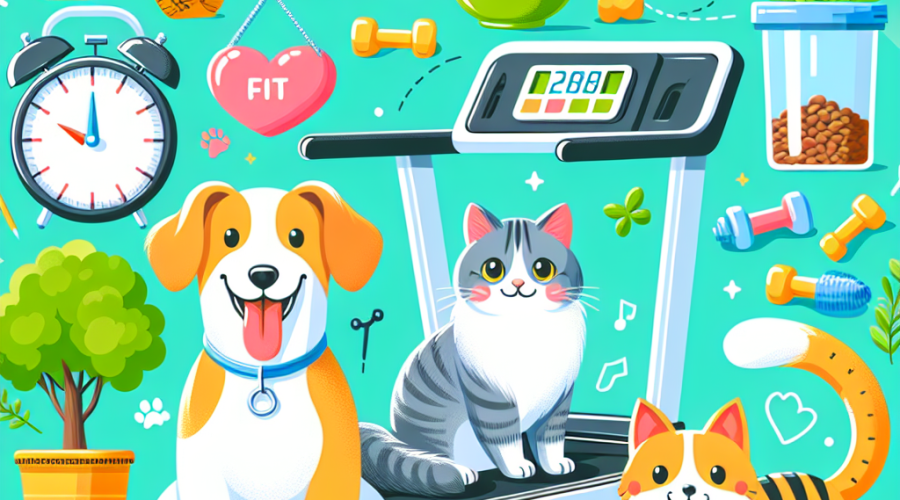Top Strategies for Keeping Your Pet’s Weight in Check: A Guide to Pet Obesity Management
As pet parents, we’re often guilty of sneaking our furry friends an extra treat or two. Who can resist those pleading eyes, right? But here’s the rub: those treats add up, and not just on the scales. Pet obesity is a growing concern, with more than half of our pets tipping the scales into the overweight category. So, let’s dive into some top strategies to keep your pet’s weight in check and manage pet obesity effectively.
First things first, understanding the risks associated with pet obesity is crucial. There’s more at stake than just not fitting into that adorable sweater. Overweight pets are at a higher risk for a plethora of health issues like diabetes, heart disease, and joint problems. That extra weight can really put a damper on their quality of life, not to mention potentially shorten their lifespan.
So, how do we tackle this weighty issue? The journey to a healthier pet begins with diet management. That doesn’t mean putting your cat or dog on the latest fad diet. Instead, focus on portion control and high-quality, nutritious food. It’s about feeding them what their bodies need and not just what their appetites want.
Now, I’m not suggesting you go full-on pet nutritionist (unless you want to, of course), but getting to grips with the basics is a good place to start. Look at the feeding guide on pet food labels, but remember, these are often overestimated. Your vet can offer more personalized advice based on your pet’s specific needs, activity levels, and lifestyle.
Exercise is the next piece of the puzzle. It’s not just about cutting back on calories; it’s about burning them too. Regular exercise is vital for keeping your pet fit and healthy. Dogs might love a good walk or a game of fetch, while cats might prefer chasing a laser pointer or pouncing on toys. The key is to find activities that suit your pet’s interests and abilities.
But what if your pet resembles a couch potato more than an athlete? Start slow. Gradual increases in activity can prevent injuries and help your pet build stamina. Think of it as Couch to 5k, but for pets. It’s about making movement fun and part of their daily routine.
Another strategy that’s often overlooked is mental stimulation. Just like us, pets need to engage their brains to stay sharp. Puzzle feeders, training sessions, and new toys can all keep your pet mentally active, which can indirectly help with weight management. It’s all about keeping their minds off food and on more enriching pursuits.
Now, let’s talk about those treats. Treats should be just that – a treat, not a staple of their diet. It’s easy to go overboard, but treats should make up no more than 10% of your pet’s daily calorie intake. And guess what? There are plenty of low-calorie options out there that your pet will still love. Veggies like carrot sticks or green beans can be crunchy, satisfying alternatives for dogs. For cats, a few pieces of their kibble taken from their daily allowance can be used as treats.
Monitoring progress is key to any successful weight management plan. Regular weigh-ins and body condition scoring can help you track your pet’s progress. This doesn’t mean popping your Great Dane on the bathroom scales, but most vets are happy to have you pop in for a quick weigh-in. It’s a great way to catch any weight gain early before it becomes a bigger problem.
Support from fellow pet owners can be a massive help too. Why not join a pet weight loss group or forum? Sharing tips and experiences can be incredibly motivating. Plus, it’s always nice to celebrate the successes and support each other through the challenges.
Managing your pet’s weight isn’t just about aesthetics; it’s about their health, happiness, and longevity. It requires a balance of proper diet, regular exercise, mental stimulation, and, of course, lots of love and attention. Remember, it’s a journey you and your pet are on together, and the rewards are well worth the effort. A healthier pet is a happier pet, and isn’t that what we all want for our furry family members?
FAQs
Q: What are the first steps to take if I suspect my pet is overweight?
A: The first step is to consult your vet for a health assessment and an accurate weigh-in. Your vet can then help you establish a weight management plan tailored to your pet’s needs.
Q: How can I monitor my pet’s food intake to prevent obesity?
A: Measure your pet’s food portions using a standard measuring cup and avoid free-feeding. Instead, stick to a regular feeding schedule with controlled portions as recommended by your vet.
Q: What type of diet is best for a pet that needs to lose weight?
A: A high-protein, low-carb diet with fiber to promote fullness can be effective for weight loss. Again, your vet can recommend a specific diet plan that’s suitable for your pet’s breed, age, and health condition.
Q: How important is exercise in managing my pet’s weight?
A: Exercise is crucial for weight management, as it helps burn calories and maintains muscle mass. Aim for daily physical activity that’s appropriate for your pet’s fitness level and breed.
Q: Can treats contribute to pet obesity, and how can I manage treat-giving?
A: Yes, treats can significantly contribute to excess weight if not given in moderation. Opt for healthy, low-calorie treats and ensure they make up no more than 10% of your pet’s daily calorie intake.

